#Originally released in 1970.
Explore tagged Tumblr posts
Text
The Doors - You Make Me Real
#The Doors#Morrison Hotel#Roadhouse Blues#Genre: Blues Rock Psychedelic Rock Classic Rock#classic rock#Psychedelic Rock /Acid Rock/blues Rock#classic#USA#Originally released in 1970.#70's#70s#70's classic rock
24 notes
·
View notes
Text
I edited this video to showcase the Original Sheik's frightening one-sided brutality which I grew up on during the 1970s. This is the crass, inappropriate, violent style of wrestling that first turned me on. The full match was recently posted to YouTube.
I think what attracted me to the Sheik, and to pro wrestling in general, was not just the wild action and exciting moves, but the homoerotic implications. (I didn't know all these fancy words back in 1975, but I knew what visuals got me all worked up.) For example, the scene opens with the Sheik getting kinky with his big snake, petting and licking it like foreplay, then punishing the other man with it. He then proceeds to dominate the weaker man, who acts completely submissive, just letting the foreign man own him. This is really queer behavior, especially given the near nudity of the performers.
The Sheik goes on to bite the man's forehead, which resembles a big kiss and seems like a very gay way to fight. He also makes orgasmic faces while holding/hurting the other man, his tongue lolling out like a goon -- as if wrestling is causing him to cream in his trunks. It's all very sexual, with the commentator adding to the bondage vibe:
He enjoys inflicting punishment and pain on his opponent. He gets a SADISTIC DELIGHT out of it, as you can see.
Growing up amid these sado-masochistic performances and adult-oriented narratives, I basically had ZERO chance of avoiding a pro wrestling obsession.
#original sheik#wrestling video#1970s brutal wrestling#face biting in wrestling#camel clutch#won't release the hold#post match punishment#suffering male
6 notes
·
View notes
Text

Italian 1970's reissue of "The Gold Rush"
5 notes
·
View notes
Text
Andrew Gold - Spooky, Scary Skeletons 1996
Andrew Maurice Gold was an American multi-instrumentalist, singer, songwriter, and record producer who influenced much of the Los Angeles-dominated pop/soft rock sound in the 1970s. Gold performed on scores of records by other artists, especially Linda Ronstadt, and had his own success with the US top 40 hits "Lonely Boy" (1977) and "Thank You for Being a Friend" (1978) (which was later used as the opening theme for The Golden Girls), as well as the UK top five hit "Never Let Her Slip Away" (1978). In the 1980s, he had further international chart success as one half of the new wave duo Wax. During the 1990s, Gold produced, composed, performed on and wrote tracks for films, commercials, and television soundtracks.
"Spooky, Scary Skeletons" is a Halloween song, first released on Gold's 1996 album Halloween Howls: Fun & Scary Music. It was one of nine original songs on the album, released to fill a void of availability of fun and scary Halloween original songs according to Gold on his 1996 liner notes. He produced, mixed, sang and played all the instruments on the track. It prominently features a xylophone to represent the sound of skeletal bones rattling.
In 1998, Disney included the song on their VHS tape Disney's Sing-Along Songs: Happy Haunting: Party at Disneyland! (which was released on DVD as Disney's Sing-Along Songs: Happy Haunting in 2006). They paired the song with the 1929 animated short film The Skeleton Dance by Ub Iwerks. The video has garnered over 31 million views since it was recreated and uploaded by a Youtube user. On October 31, 2013, the Youtube band The Living Tombstone created an electronic dance-like remix of the song with a faster tempo than the original. Their upload of the remix to YouTube has garnered over 102 million views. By 2022, there were over 5 million TikTok videos featuring the song. “Spooky, Scary Skeletons” was adapted into a children's picture book by Random House Children's Books featuring the lyrics to the song on August 27, 2024.
"Spooky, Scary Skeletons" received a total of 90% yes votes!
youtube
1K notes
·
View notes
Note
Have you ever seen a feature film (60+minutes) that was released before the 1970s?
(Originally wanted to ask about anything older than the original Star Wars, which is 1977, but I realised we're on tumblr and the purpose of this question might have been slightly defeated if people vote "yes" because of having seen something like 1975's Rocky Horror Picture Show, which I feel is a bit too close. So I just rounded it up for the whole decade. A movie released in 1969 or earlier.)
263 notes
·
View notes
Text
: 🎼💜🎼
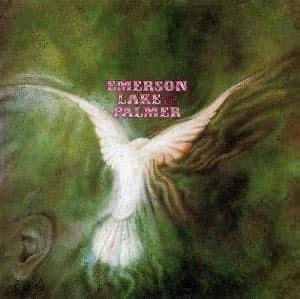
EMERSON LAKE & PALMER
Emerson Lake & Palmer 🇬🇧✨🧬💙 Studio Album, released in 1970
Songs / Tracks Listing
1. The Barbarian (4:33)
2. Take a Pebble (12:34)
3. Knife-Edge (5:08)
4. The Three Fates (7:45)
- a. Clotho (Royal Festival Hall organ)
- b. Lachesis (piano solo)
- c. Atropos (piano trio)
5. Tank (6:52)
6Lucky Man(4:36). Musicians
- Greg Lake / vocals, bass, electric & acoustic guitars, producer
- Keith Emerson / Hammond organ, piano, clavinet, Royal Festival Hall pipe organ (4), modular Moog
- Carl Palmer / drums, percussion
2 notes
·
View notes
Text
Comic!Hobie has switched from his iconic converse to blue-laced combat boots!
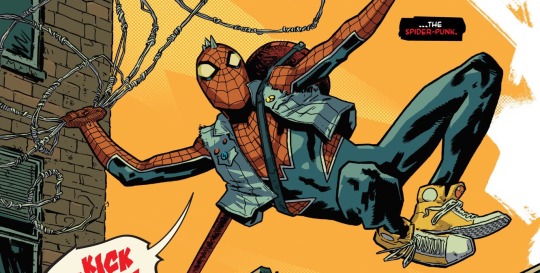
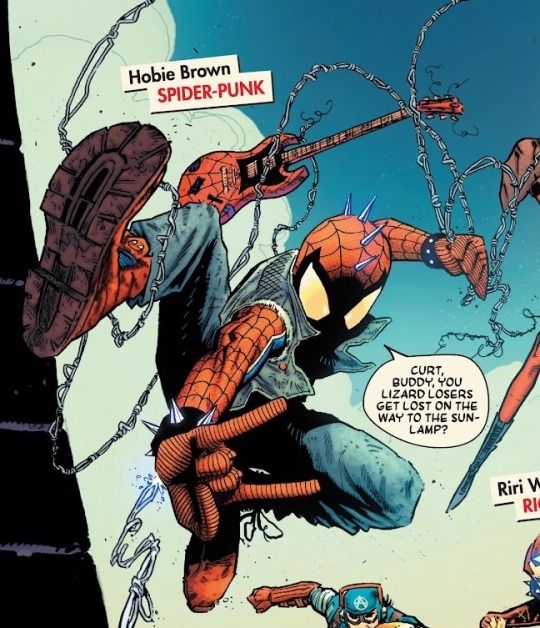
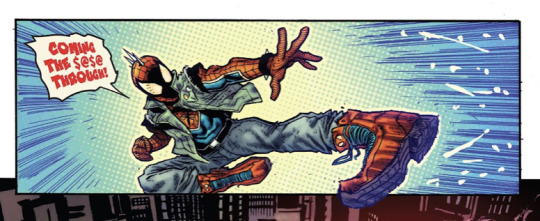
[Bottom two images from Spider-Punk: Arms Race - released 28/2/24]
Originally, all throughout his comic book run, Hobie has worn different pairs of converse.
However this was changed for the movie to better reflect 1970's British culture, which I spoke about here.
Hence, Hobies line to Gwen 'Are those my Chucks?'. A nod to the footwear he typically wears in the comics.
However now, with Spider-Punk's newest run hitting shelves, it seems Comic!Hobie has switched to boots and blue laces as well!
And, just in line with punk aesthetics - they're ladder laced in line with the old Laces Code.
With Hobie killing Commander-in-Chief President Osborn, these make complete sense for him.
How cool!!!! I really hope this means they're taking feedback from fans 😁


#THEY GAVE HIM THE BOOTS!!!!!!#HE DIDN'T HAVE THAT BEFORE#AND THEY'RE LADDER LACED#PERFECT#spiderman#atsv#spider man#marvel#across the spiderverse#hobie brown#spider punk#spiderpunk
695 notes
·
View notes
Text
It's queer! by Nelson Motta (O Pasquim)
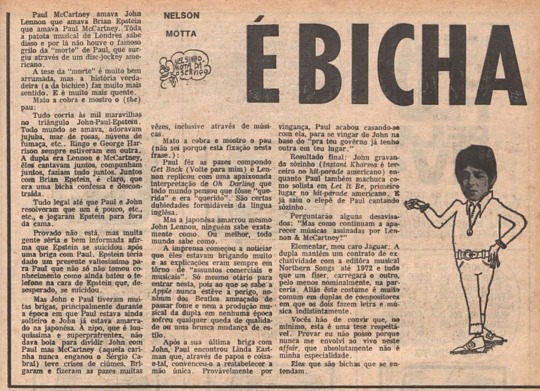
"o pasquim" was a brazilian alternative weekly, known for its paradoxical and satirical nature, published between 1969 and 1991. it was recognized for its engagement with the brazilian counterculture scene of the 1960s and for its role in opposing the military regime. in 1970, the magazine published an article about john and paul (and brian) affair, written by nelson motta. here's the translation (with adicional notes) 👇
It’s queer! by Nelson Motta
Paul McCartney loved John Lennon, who loved Brian Epstein, who loved Paul McCartney. All the whole London music scene (1) knows this, and there, the famous suspicion about Paul's “death”, which originated with an American DJ, didn't catch on.
The "death" theory is well-constructed, but the true story (the one about their faggotry (2)) makes much more sense. And it's much spicier. I prove what I said (3):
Everything was going great in the John-Paul-Epstein triangle. Everyone loved each other, they adored jelly beans, everything was rosy, smoke and mirrors, etc. Ringo and George Harrison were always on a different page. The duo was Lennon and McCartney — they sang together, composed together, did everything together. Together with Brian Epstein, of course, who was openly queer and quite relaxed about it.
Everything was fine until Paul and John decided that two's company and three's a crowd, etc., and kicked Epstein out of the bed.
It's not proven, but many serious and well-informed people claim that Epstein committed suicide after a fight with Paul. Epstein supposedly gave Paul a very valuable gift, which Paul not only ignored but also hung up on Epstein, who, in despair, killed himself.
But John and Paul had many arguments, especially when Paul was still single and John was already tied down with the Japanese woman. The nippo, who is very wild and forward-thinking (4), didn't mind sharing John with Paul, but McCartney (that face never fooled Sérgio Cabral (5)) had jealousy issues. They fought and made up many times, even through music.
To "show the proof"(6) (I'm not sure why this phrase keeps coming up): Paul made up by composing Get Back (To Me) (7), and Lennon responded with a passionate interpretation of Oh Darling that everyone thought was "darling" (in the female sense) but was actually "darling" (in the male sense)(8). These are some of the great ambiguities of the English language.
But the Japanese woman really tied John Lennon down; no one knows exactly how. Or rather, everyone knows how.
The press started reporting that they were fighting a lot, and the explanations were always about "business and musical matters." Only a fool would believe that, since it's known that Apple was never in danger, none of the Beatles were at risk of starving, and the duo's musical production never suffered any drop in quality or sudden change in style.
After his last fight with John, Paul met Linda Eastman, who, through talks and things like that, convinced him to re-establish his heterosexuality (9). Probably out of revenge, Paul ended up marrying her to get back at John with a "for your information, I've already found someone else to replace you." (10)
The final result: John recording solo (Instant Karma is third on the American charts) while Paul is also making waves as a solo artist with Let It Be, first place on the American charts, and Paul's solo album has already been released.
Some clueless people might ask, "But how do Lennon & McCartney songs keep appearing?"
Elementary, my dear Jaguar (11): The duo has an exclusive contract with the music publisher Northern Songs until 1972, and everything one does will carry the other's name, at least nominally, as a partner. This practice is very common among songwriting duos where both contribute to the lyrics and music interchangeably.
You must admit that, at the very least, this is a respectable theory. I can't prove it because I've never been involved in this affair, which is absolutely not my specialty.
They’re the ones who are queer; let them figure it out.
notes:
(1) in the original, “patota musical de londres”. “patota” has a kind of pejorative meaning of a group of people. also means a group of friends or colleagues.
(2) in the original, “bichisse”, and it was the best way of translation that i could find.
(3) in the original, “mato a cobra e mostro o (the) pau”. again the best i could find.
(4) in the original, “superprafrentex”, which was a common slang in brazil in the 70s, used to describe someone who was modern and progressive.
(5) sérgio cabral was a famous journalist in brazil, and one of the founders of “o pasquim”.
(6) again, in the original, “mato a cobra e mostro o (the) pau”.
(7) in the original, “Get Back (Volta pra mim)”, which is funnier in portuguese and i tried to keep the tone.
(8) in Portuguese, every noun has a gender. darling can be translated to “querida” (feminine) or “querido” (masculine).
(9) in the original, “restabelecer a mão única”. “mão única”, which literally translates to “one-way street”, makes a reference to paul’s sexuality, implying he was going (or into) on both “ways”, men and women.
(10) in the original, “pra teu governo já tenho outra em teu lugar”, another idiom. but works in english, anyway.
(11) in the original, “Elementar, meu caro Jaguar”, a playful reference to sherlock holmes’ line.
disclaimer: this was written in 1970, so is full of outdated expressions (and slurs) so read carefully!
267 notes
·
View notes
Text
Today is the 81st anniversary of the Warsaw Ghetto Uprising!!
I still remember that day in grad school when I learned about this lady named Vladka Meed, who smuggled explosives into the Ghetto in preparation for the Uprising.
That is my origin story. Learning the deep involvement of women at every level of the Uprising, from armaments to command (enter: Queen Zivia) changed my life, as a Jewish woman, and as a historian, forever. And I'm so SO honored that I get to play a role in ensuring that they take their rightful place in our collective memory.*
Remember, US readers, whenever anyone tells you that the Jews "should have resisted," that "if the Jews had guns more could have been saved," remember, that the Jews DID resist. They DID have guns. And most of the Jews who rose up and fought?--expected to die. The Warsaw Ghetto fighters didn't start the Uprising out of some silly dream that they could "beat" the Nazis, they rose up to make a statement about the dignity of the Jewish people.
As a sidenote, many of the best scholarly treatments of Jewish resistance during the Holocaust have been out of print since the 1970s.
*My first book, The Girl Bandits of the Warsaw Ghetto, is set to be released in Fall 2025.
273 notes
·
View notes
Text


General Electric Blue Max radio, model P2760B, made in 1970.
Originally released in 1969. The inside lights up
889 notes
·
View notes
Text
Today's rabbithole: the origins of "dyadic" as opposite of intersex/h-word
TLDR: "dyadic" seems to come from 1970s radical feminism and seems to have entered intersex vocabulary via gender studies. This implies it is NOT a term coined from within the intersex community.
I've been reading Cripping Intersex since it's this month's pick for @intersexbookclub (and it's not too late for you to pick it up yourself! 💜). One thing that caught my attention is Orr spends a bunch of time presenting the origins of "endosex" and "perisex" as disputed for whether these terms were coined by intersex people or not.
Orr does this because they clearly prefer "dyadic" and are trying to justify why they're talking about "compulsory dyadism" rather than "compulsory endonormativity/perinormativity" etc. 🤨
Interestingly enough, Orr makes absolutely zero attempt in the book to find an origin for the word "dyadic". 🧐 Orr also never questions whether the term "dyadic" actually came from the intersex community. 🧐 So..... rabbit hole time!
Before I get into what I found on dyadic, I wanna quickly fact check Orr on the origin of endosex. Best as I can tell, the term was first used in German in 2000 by Heike Bödeker. Bödeker is controversial for supporting autogynephilia 😬, but I've never seen anybody doubt Bödeker having mixed gonadal dysgenesis. If anybody knows of an older use of endosex, please send it my way! But as far as I can tell, "endosex" was coined by an intersex person.
Okay, onto the origin of dyadic. Orr presents this word as though its only detractors come from its implication there is a sex binary, even though as @intersex-ionality discusses here there are other reasons people don't like it. One reason is that the term is considered to originate from outside the intersex community.
Orr never questions the origins of dyadic. But intersex-ionality's post got me wondering if I could track down an textual origin.
So I went to Google Scholar, searched for "dyad" or "dyadic" plus "intersex" or the h-word and kept changing the time period increasingly far back in time. (Initially I just used intersex until I remembered the h-word slur would be more common in older articles 😬.)
I went into this thinking maybe dyadic would be related to how in early intersex studies literature like Critical Intersex (2009) you can see authors trying out terms like "dimorphic" and "dimorphous" that reference sexual dimorphism. (Neither "dyadic" nor "endosex" show up in the book.)
But the earliest works by intersex scholars that invoke dyadic tend to use it in a way that implies to me it has its own origin - e.g. Malatino (2010) talks about "at one pole, the dyad of the dimorphic heterosexual couple and, at the other, the hermaphroditic body" and "the heteronormative promised land of proper dyadic, dimorphic sex" which gives me the impression dyadic has a more sociological origin rather than the biology origin of dimorphic.
This 2010 gender studies article by Mandy Merck that talks about the intersex rights movement was my first solid lead. Merck draws a direct connection between the intersex rights movement and the 1970 book The Dialectic of Sex by Shulamith Firestone. 😯
In the book, Firestone explicitly talks about the "male-female dyad". This book had a fairly big impact when it came out. Firestone was a big-name second-wave radical feminist. And as Merck puts it: "[Firestone's] aim is to release women and men from the culturally gendered[5] dyad of the “subjective, intuitive, introverted, wishful, dreamy or fantastic” and the “objective, logical, extroverted, realistic”[6] into a society undivided by genital differences. This she calls “integration.”" (emphasis mine)
Pushing the search terms to before the 00s, I found I there were some 1980s botanists kinda using "dyad" as an opposite to "hermaphrodite" (example). I don't know how standard this was though, and with Google Scholar it is important to remember that digitization becomes less common the further back you go. 🤷♀️
Judith Butler used "dyadic" in a 1985 article about Foucault's Herculine Barbin.
The Butler article got me searching for more generally - "dyad" or "dyadic" plus "sex-roles male female". I found lots of results using dyadic to talk about female/male sex roles from the 1970s.... and a rather sudden paucity of such articles in the 1960s. 🤔
When I restricted the search to anything before 1970, I get results from symbolic interactionist sociology. I.e. the sociology use of "dyadic" (i.e. any social interaction happening between a pair of individuals).
So looks like dyadic as a sex role thing entered the academic lexicon in the early 70s. Which lines up pretty damn well with The Dialectic of Sex coming out in 1970. 👍️ And indeed, many of the 70s uses of "dyadic" explicitly cite Firestone.
I'm guessing Firestone was probably influenced by the interactionist term. Lots of sociologists were talking about dyadic relationships and/or interactions such as teacher-student, parent-child, husband-wife, etc. In this context, it's not surprising that Firestone would pick dyad as a term to talk about male-female sex roles and interactions.
Other than the 1980s botany articles I didn't actually find much from the pre-2000 biology world, and no leads from the medical literature. This doesn't mean "dyadic" wasn't being used by physicans, just that it isn't showing up in my searches on Google Scholar.
I'm coming out of this with the impression that Merck's got it right to be connecting the intersex-related use of dyadic as originating from the writing of Shulamith Firestone. If anybody knows of competing evidence for an origin, *please* do send it my way as I'd be super interested. But in the absence of other evidence, I'd tentatively say that the term dyadic came out of second wave radical feminism and *not* the intersex community.
#intersex#actually intersex#dyadic#endosex#etymology#queer linguistics#intersex terminology#intersex studies#queer theory#feminism#actuallyintersex
73 notes
·
View notes
Text
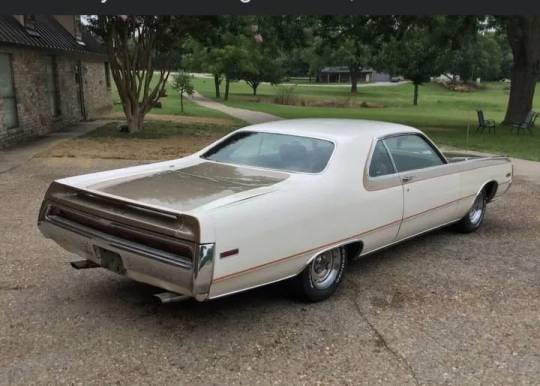
1970 Chrysler 300 Hurst
One of the great unknowns about the 1970 Chrysler 300 Hurst is exactly how many cars were built. Estimates put the total as low as 485, and as high as 502 cars. Regardless of what the figure actually is, the car itself is a pretty special piece of machinery.
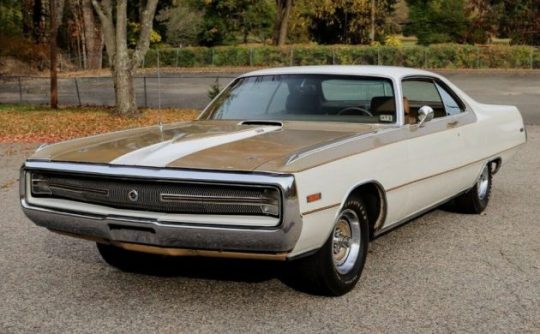
The 300 Hurst is a giant of a car at 19′ in length. All of the Hursts rolled off the production line finished in Spinnaker White. The cars were then shipped to the Hurst factory in Warminster, Pennsylvania, where a substantial transformation was performed. The first change to be made was the removal of the standard Chrysler steel hood skin, which was replaced with a fiberglass unit. This featured a decorative hood scoop and the obligatory set of recessed hood locks. The deck lid was also removed, and once again, a fiberglass replacement, complete with a spoiler integrated with the rear quarter panels, was also installed. The White paintwork was complimented by the addition of Satin Tan highlights and contrasting pinstripes, and the wheels were adorned with the same Satin Tan color in the centers. This Hurst is a clean car, with a small area of rust visible in the lower section of the driver’s side front fender, and surface corrosion present on the car’s underside. The Spinnaker White paint appears to be in good condition, but there has been some deterioration of the Satin Tan paint on both the hood and the deck lid. The exterior trim and chrome all look good, while the tinted glass is close to perfect.

The 300 Hurst was a premium car at a premium price, so naturally, it required a premium interior. In this case, seat upholstery was available in a single type and color. Continuing the exterior theme, the color is Saddle Tan, and the material is leather. The plush front seats are not standard 300 items but have been pilfered from the Imperial parts bin. While the original intention was for a Hurst shifter to be part of the interior features, this is something that never eventuated. The interior of this Hurst is close to perfect, with a single discolored spot on the dash pad being the most obvious fault. The rest of it presents in virtually as-new condition, and as befits a luxury car, it is loaded with luxury touches. These include air conditioning, power windows, six-way power seats, cruise control, a remote trunk release, and I think that there also might be an 8-track player hanging under the dash.

The 300 Hurst was the biggest of the muscle cars, and as such, it needed a big motor to get it moving. In this case, it is the TNT 440 engine, pumping out 375hp. The Hurst also features a 727 TorqueFlite transmission, a 3.23 rear end, power steering, power brakes, heavy-duty rear springs and front torsion bars, and sway bars. The exhaust was a full dual system, ending in quad tips. This Hurst hasn’t seen a lot of recent use, and documentation confirms that between 1986 and 2019, it managed to accumulate a grand total of 20 miles! Since being removed from its climate-controlled storage, it has undergone a meticulous mechanical check and recommissioning, and it is now said to run and drive perfectly. The owner does suggest that while the tires look good, they are pretty olds, and replacing them might be a good idea. He also says that the Hurst may need mufflers fairly soon. The car does come with a fair collection of documentation, including the original Build Sheet and Window Sticker, a pristine Certi-Card, Owner’s Manual, as well as dealer paperwork and other assorted items.
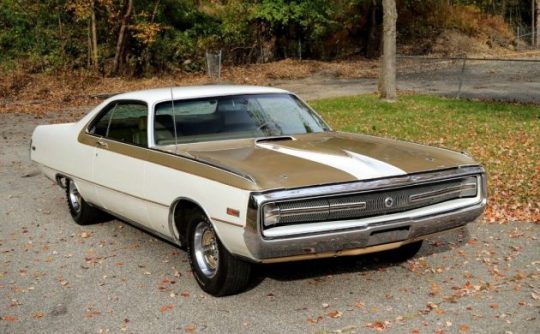
While there has always been some question surrounding the build totals for the 1970 300 Hurst, one thing is certain, and that is that there are less than 300 cars in existence today. Pristine examples can fetch sums in excess of $30,000, and even a rough example in need of restoration can still sell for anywhere around $13,000. This one doesn’t need a major restoration, but it does require some cosmetic work. I’m not sure where bidding is eventually going to go with this one, but I would suspect that it will be somewhere around the low to mid $20,000 mark. Even at that price, it probably wouldn’t be a bad buy.
#Chrysler 300 Hurst#chrysler 300#chrysler#car#cars#muscle car#american muscle#mopar#moparperformance#moparnation#moparworld
165 notes
·
View notes
Text
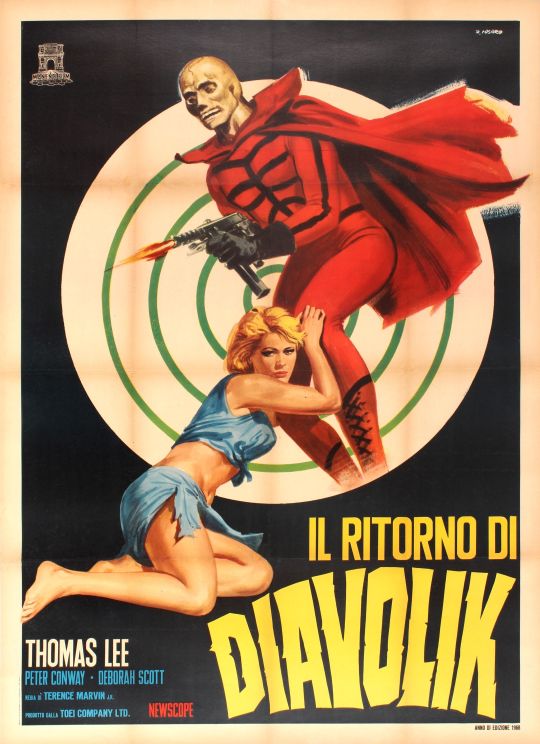
Italian poster for the 1966 film Golden Bat (aka Ogon Bat).
They got the head and shape of the costume mostly right, but then they went off the rails.
I guess, with the (translated) title The Return of Diavolik, the Italian exhibitors thought they would be able to fill theaters with people who thought this was a film based on Diabolik. Diabolik, an Italian comic book character created in 1962, was a mega-popular at the time, an anti-hero thief in an all-black costume that only showed his eyes. Diabolik made it to the big screen in the Mario Bava-directed film Danger: Diabolik (1968). American actor John Phillip Law (who would later star in 1974's The Golden Voyage of Sinbad) played the titular super-thief.

As you can see, there isn't really any resemblance between the two characters.
However, there is another Italian comic book anti-hero, one whose comic book costume was basically copied for the Golden Bat poster: Kriminal.

Inspired by the success of Diabolik, Kriminal debuted in Italian comics two years later. He was another anti-hero thief, and the similarities with Diabolik didn't stop there. He was, though, much more sadistic than his inspiration. His stories included a lot more sex and violence, especially against women, whom he would murder to protect his identity.
Never as successful as his forbear, Kriminal nevertheless had a ten-year run in comics, and spawned two films:
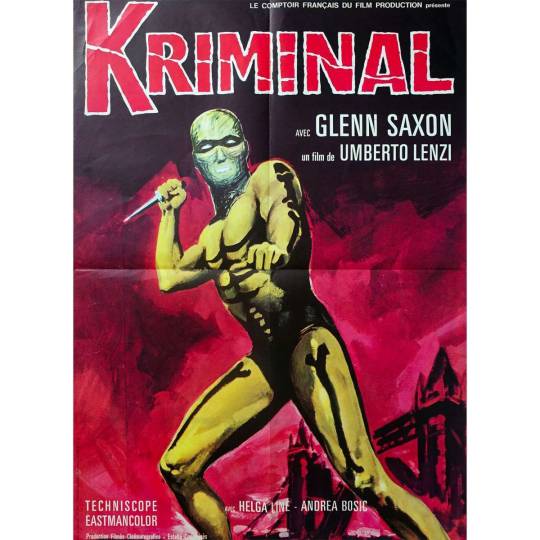

Kriminal (1966). He really looks like Golden Bat in that second poster.

The Mark of Kriminal (1967).
Of course, none of these characters should be confused with another fellow with a skeleton motif: Sadistik, the Diabolical Super Kriminal!
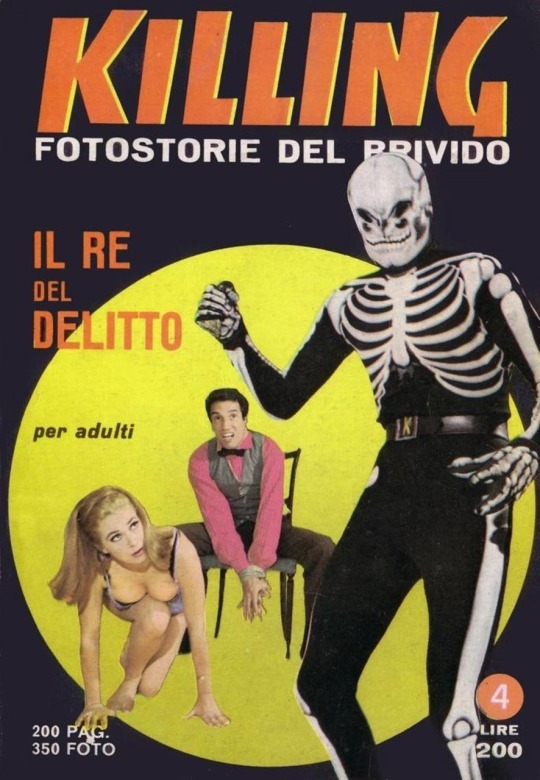
Originally named Killing when he debuted in Italian comics (fumetti, to be more precise) in 1966, Sadistik was inspired by the excesses of Kriminal. There's just one thing: Sadistik didn't think Kriminal went far enough, so he made sure to out-do his idol (whom he had a crossover with, the first in Italian comics). This guy didn't pretend to be an anti-hero; he was an out-and out villain who occasionally wiped out other crooks who got in his way.
He was known as Satanik in France (Killing just seemed a little on-the-nose), and Sadistik in the English-speaking world. His fumetti exploits only lasted 62 issues over three years in his native Italy. In Argentina, where he was still called Killing, the publishers there created their own stories when the original ones ran out. The Argentinian series lasted into the 1980s.
Additionally, the character was called KiLiNK in Turkey, where he was the star of several unauthorized films (I sometimes wonder if that's the only kind Turkey made) in the late 1960s and early 1970s. The best known of those films is 1967's Killing In Istanbul.


Apparently, the son of a scientist KiLiNK kills somehow gains super-powers, and calls himself Superman. His battle with KiLiNK carries over to the sequel, which was released the same year.


Anyway, what was I talking about when I started this post?
#Golden Bat#Ogon Bat#The Return of Diavolik#Diabolik#Danger: Diabolik#Kriminal#The Mark of Kriminal#Killing#Satanik#Sadistic#fumetti#Italian comic books#KiLiNK#Killing In Istanbul
138 notes
·
View notes
Text
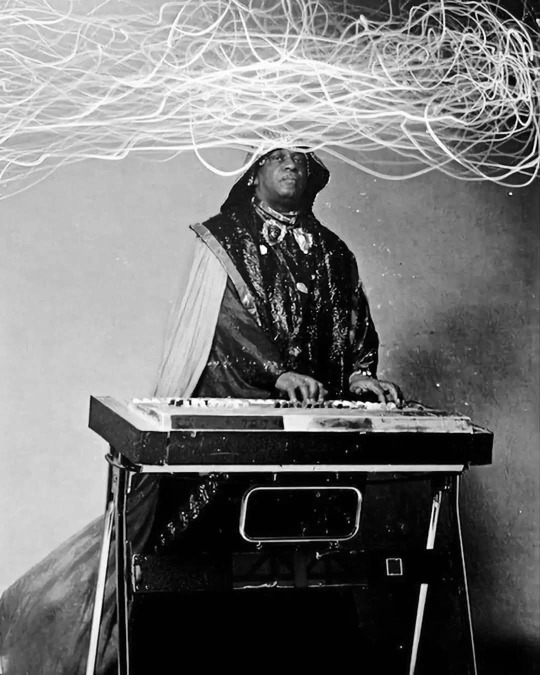
Sun Ra, a pioneering figure in jazz, is celebrated for his unique philosophy and contributions to the genre. Born Herman Poole Blount in 1914, Sun Ra transformed his identity, taking on the cosmic name Sun Ra in the 1950s, embodying his belief in a connection to the cosmos and the notion of extraterrestrial origins. His music was deeply rooted in the exploration of the unknown, blending elements of avant-garde jazz, experimental sounds, and cosmic themes. Sun Ra’s philosophy, as expressed in his quote, emphasizes a focus on unity and discipline rather than division, particularly rejecting the limitations imposed by race and societal classifications. His work extended beyond the realm of music, seeking to redefine cultural identity and cosmic unity.
The photo capturing Sun Ra from 1973, taken by Francis Ing, embodies the experimental and innovative spirit of his era. During the 1970s, Sun Ra and his Arkestra were at the forefront of the avant-garde jazz movement. This period saw the release of influential albums such as Atlantis, which further solidified Sun Ra’s reputation as a visionary artist. His performances often incorporated elaborate costumes, cosmic themes, and a ritualistic approach to music, creating an otherworldly atmosphere that became a hallmark of his stage presence. Sun Ra’s influence extended beyond the jazz community, inspiring countless musicians and artists across various genres, from rock to hip-hop.
Sun Ra’s philosophy of “dark tradition” challenges conventional views of jazz and music history. His concept of dark tradition emphasizes a broader, more inclusive approach to cultural heritage, beyond the narrow confines of racial identity. The photo of Sun Ra in 1973 encapsulates this ethos, reflecting his commitment to pushing boundaries and exploring the deeper, often hidden aspects of human existence. His music, as heard in tracks like “Plutonian Nights” by the Sun Ra Arkestra, continues to inspire new generations of musicians and listeners, ensuring his legacy as a groundbreaking figure in jazz history.
52 notes
·
View notes
Text
Bobby "Boris" Pickett and the Crypt-Kickers - Monster Mash 1962
"Monster Mash" is a novelty song by Bobby "Boris" Pickett. It was released as a single in August 1962 along with a full-length LP called The Original Monster Mash, which contained several other monster-themed tunes. The "Monster Mash" single was number one on the Billboard Hot 100 chart on October 20–27 of that year, just before Halloween. "Monster Mash" has sustained a lasting impact in various recordings, film inclusions, and re-releases since its initial release. In 2021, nearly 60 years after its release, "Monster Mash" re-entered the Billboard Hot 100 chart at number 37. As of 2023, the song was generating $1 million annually in royalties.
The song is narrated by a mad scientist whose monster, late one evening, rises from his slab to perform a new dance, with a name implying it is inspired by the Mashed Potato, a popular dance of the early 1960s. The dance becomes "the hit of the land" when the scientist throws a party for other monsters, among them classic 1940s horror film icons such as the Wolfman, Igor, Count Dracula, and his son. The song was re-released several times and appeared on the US Billboard charts on two occasions after the original release: August 1970 and May 1973. The BBC had banned the record from airplay in 1962 on the grounds that the song was "too morbid", but it was later performed on the network's television program Juke Box Jury. The record was re-released in the UK in 1973, where it peaked at number three in early October. It re-entered the British charts again on November 2, 2008, at number 60.
"Monster Mash" received a total of 88,9% yes votes!
youtube
715 notes
·
View notes
Text
The 10 Most Anticipated TTRPGs For 2025!
EN World’s annual vote on the most anticipated titles of the coming year, and yes, some games have appeared on this list in previous years.

10) Starfinder 2E (Paizo Publishing) The Starfinder Playtest Rulebook brings Starfinder into a new age of compatibility, as Starfinder switches to using the same rules engine that powers the popular Second Edition of the Pathfinder Roleplaying Game. Inside this playtest for the new edition, you’ll find six new classes, 10 ancestries, new skills, new feats, futuristic equipment including augmentations and upgrades, new science-fantasy spells, and more!

9) Alien - Evolved Edition (Free League) Expanded and updated core rules and a new cinematic scenario for the award-winning RPG from Free League and 20th Century Studios. Based upon feedback from thousands of players over five years of adventures, the Evolved Edition of the Core Rulebook delivers an updated and streamlined version of the ALIEN RPG fans know and love, along with additional new artwork, new content, and a variety of new tools for players and Game Mothers alike, all fully compatible with previous releases and game material.

8) 13th Age 2nd Edition (Pelgrane Press) A New Edition of the Award-Winning Heroic Fantasy Game! The coolest and most fun parts of traditional d20-rolling fantasy gaming plus story-focused rules, now with updated class and kin powers, fearsome new abilities for your favorite monsters, and revamped icon connection mechanics!
13th Age 2E has been in this chart three years running! In both 2023 and 2024 it came 3rd in the poll!

7) Coriolis: The Great Dark (Free League) Free League's original sci-fi RPG returns. Join expeditions to faraway stars and delve deep into ancient ruins.

6) Dolmenwood (Necrotic Gnome) Dolmenwood is a fantasy adventure game set in a lavishly detailed world inspired by the fairy tales and eerie folklore of the British Isles. Like traditional fairy tales, Dolmenwood blends the dark and whimsical, the wondrous and weird.
This is Dolmenwood's second appearance in this chart, coming in at #5 last year!

5) Terry Pratchett's Discworld: Adventures in Ankh-Morpork (Modiphius) Adventures in Ankh-Morpork, the Discworld tabletop roleplaying game, catapults you onto the streets of the Big Wahoonie, and once you've dusted yourself off you can adventure to your heart's content. With imagination and some shiny math rocks at your fingertips, your story on the Disc awaits. Based on the popular Discworld fantasy series by Sir Terry Pratchett, Adventures in Ankh-Morpork is an officially licensed tabletop roleplaying game set in its most recognisable city, complete with Sir Terry's iconic wit, humour, and humanistic satire.

4) Draw Steel (MCDM) A Fantasy RPG where your character starts, at level 1, already a hero. Maybe even locally famous! You might meet in a tavern, or start in the middle of the action! Whether you’re a group of local heroes sent to investigate mysterious goings-on in the nearby haunted wood, or famous mercenaries plotting and scheming in the big city, the MCDM RPG makes building adventures and fighting monsters fun. Basically, any adventure or story you’re running in your current Fantasy RPG, you can do that in this game. Just, in a more straightforward and fun way, unburdened by sacred cows from the 1970s.

3) Daggerheart (Darrington Press) Daggerheart is a fantasy tabletop roleplaying game of brave heroics and vibrant worlds that are built together with your gaming group. Create a shared story with your adventuring party, and shape your world through rich, long-term campaign play.

2) Brandon Sanderson's Cosmere (Brotherwise Games) The Cosmere® RPG is a "living" RPG that will grow as Brandon Sanderson writes new novels and expands his universe. This original system is designed to tell standalone stories in the Stormlight™ or Mistborn® Settings -- or sweeping Worldhopper™ campaigns that move between different worlds and realms!

1) Legend in the Mist (Son of Oak) A rustic fantasy tabletop RPG based on the acclaimed City of Mist. Spin a fireside tale of unlikely villagers setting out on a quest into a greater unknown world, rife with peril and mystery, in the vein of The Lord of the Rings, The Wheel of Time, Princess Mononoke, and many other classic fantasy stories, or create your own legendary realms with the game’s open-ended system.
#RPG#Starfinder#Alien#13th Age#Coriolis#Dolmenwood#Discworld#Draw Steel#Daggerheart#Cosmere#Legend in the Mist
41 notes
·
View notes